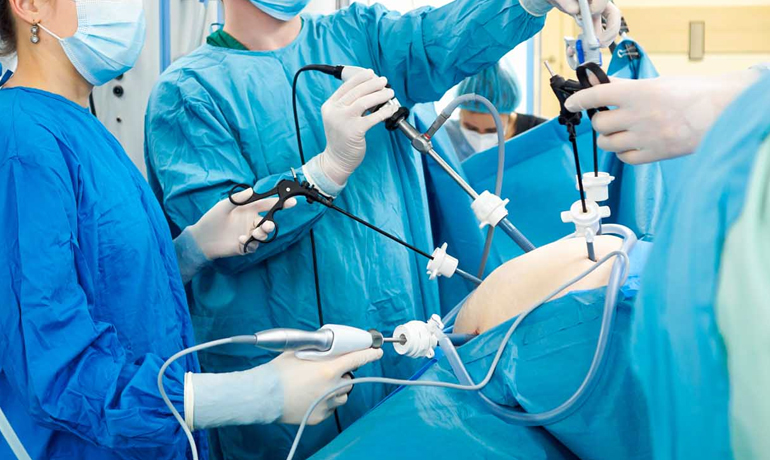Keyhole surgery, also known as minimally invasive surgery (MIS), involves performing operations through small incisions using specialized instruments and techniques. This type of surgery is commonly used in various medical fields, including spine surgery, and offers many benefits over traditional open surgery.
Advantages of Keyhole Surgery
- Smaller Incisions: Typically less than 1 inch.
- Reduced Muscle Damage: Less disruption to surrounding tissues.
- Less Blood Loss: Minimal bleeding during surgery.
- Reduced Pain: Less postoperative discomfort.
- Faster Recovery: Shorter hospital stays and quicker return to normal activities.
- Smaller Scars: Less noticeable scarring.
- Lower Risk of Infection: Smaller wounds reduce the risk of infection.
Common Conditions Treated with Keyhole Spine Surgery
- Herniated Disc: Removing herniated disc material pressing on nerves.
- Spinal Stenosis: Decompressing the spinal canal to relieve nerve pressure.
- Degenerative Disc Disease: Treating disc degeneration and associated pain.
- Spondylolisthesis: Stabilizing and realigning slipped vertebrae.
- Spinal Tumors: Biopsying or removing tumors in the spine.
- Spinal Fractures: Stabilizing vertebral fractures.
- Spinal Infections: Treating infections affecting the spine.
Types of Keyhole Spine Surgery Procedures
- Microdiscectomy: Removal of part of a herniated disc using a microscope and small instruments.
- Laminectomy/Foraminotomy: Removal of part of the vertebra to relieve nerve pressure.
- Spinal Fusion: Joining two or more vertebrae to stabilize the spine using smaller incisions.
- Kyphoplasty/Vertebroplasty: Stabilization of spinal fractures using cement injection.
- Endoscopic Spine Surgery: Using an endoscope to visualize and treat spinal conditions.
Procedure Overview
- Preparation: The patient is positioned, and anesthesia is administered (general or local with sedation).
- Incision: A small incision (usually less than an inch) is made at the surgical site.
- Dilation: Specialized instruments are used to gently separate muscles and tissues to create a pathway to the spine.
- Visualization: An endoscope or microscope is used to visualize the surgical area.
- Surgery: The specific procedure is performed using micro-instruments.
- Closure: The incision is closed with sutures or staples, and a small bandage is applied.
Recovery
- Postoperative Care: Pain management, wound care, and instructions on activity restrictions.
- Physical Therapy: Often recommended to aid recovery and strengthen the spine.
- Follow-Up: Regular follow-up appointments to monitor healing and progress.
- Activity Resumption: Gradual return to normal activities based on the surgeon’s advice.
Risks and Complications
While keyhole surgery is generally safe, potential risks and complications include:
- Infection: Risk of infection at the incision site or internally.
- Bleeding: Minor bleeding during or after the procedure.
- Nerve Damage: Risk of nerve injury, although minimized with precise techniques.
- Incomplete Relief: Possibility of persistent or recurrent symptoms.
- Anesthesia Complications: Risks associated with anesthesia.
When to Consider Keyhole Surgery
- Failed Conservative Treatments: When non-surgical treatments (physical therapy, medications) have not provided relief.
- Severe Symptoms: Significant pain, weakness, or neurological symptoms affecting daily activities.
- Specific Diagnosis: Confirmed diagnosis of a condition that is suitable for keyhole surgery, such as a herniated disc or spinal stenosis.
